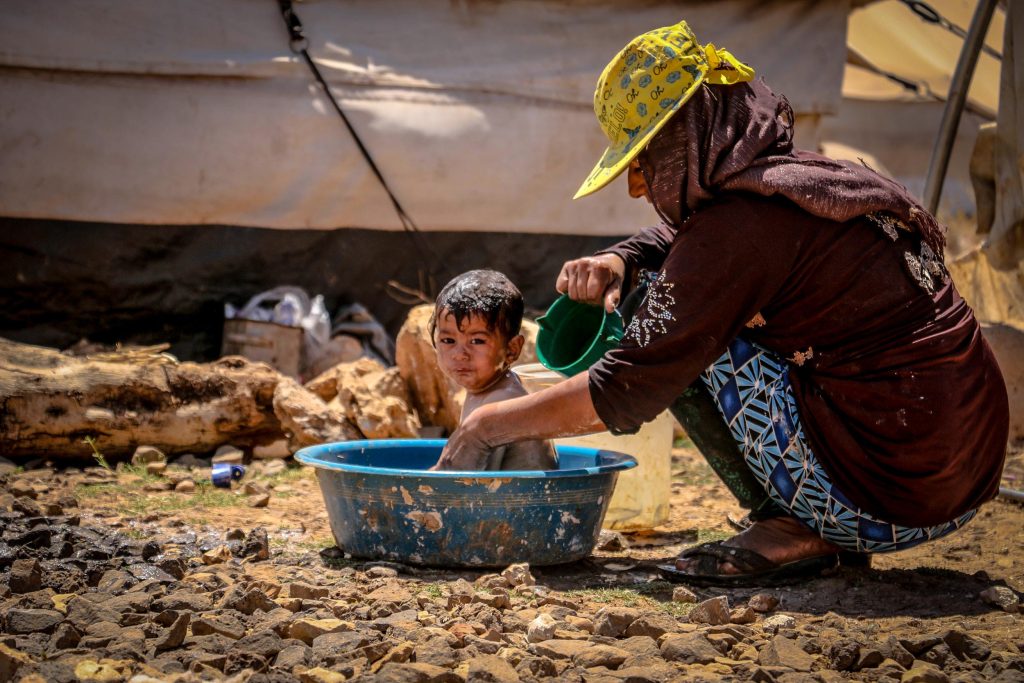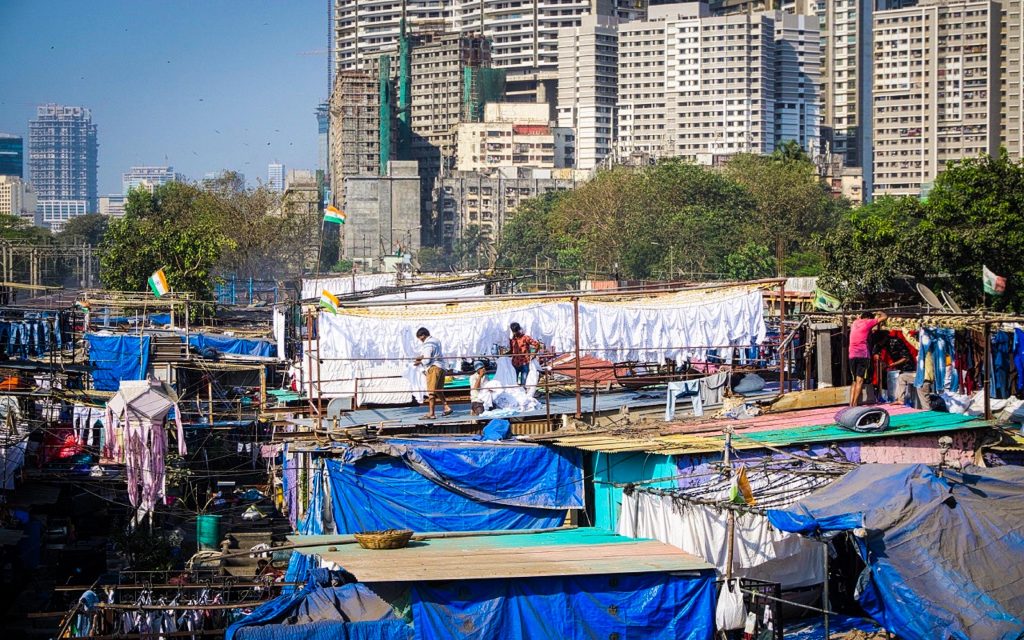Water democracy has implications for health, safety, and life opportunities. Nowhere is this more apparent than among the large informal settlements in Indian cities. This is where the work of Panchali Saikia makes a massive impact. She tells us about the barriers to resilient urban water systems, how cities can improve their water governance, and why it is about more than accessing H2O.
If you have heard of World Water Week, you may be familiar with the Stockholm International Water Institute (SIWI). Their mission is to create “a fairer, more prosperous, and resilient future” by advocating for and advising on water governance and diplomacy.
This is what inspired Panchali Saikia to move from India to Europe in 2018. As Programme Manager with the Water and Sanitation Programme team, our CityChanger commands initiatives that shape urban water resilience at all strata of the city scale.
Why WASH?

Now based in Sweden, Panchali leads the City Water Resilience Approach (CWRA), working with multiple international cities on their strategies.
She also manages SIWI’s Water, Sanitation, and Hygiene (WASH) Governance Hub, a collaboration with India’s National Institute of Urban Affairs and the Centre for Water and Sanitation (C-WAS).
“Governance is very conceptual,” begins Panchali. Her role is to decode what it means, which makes full use of an education in political science and the knowledge of water policy, resources, and rural community water governance Panchali gained while working with the International Water Management Institute in India.
She believes this holistic vantagepoint is essential to creating a framework that municipalities can use for building resilient urban water systems. But how exactly can governance lead there? First, we need to understand what we’re up against.
What’s Working Against Good Water Governance?
Panchali identifies the following key challenges faced by cities worldwide:
Underestimating Governance Functions
It takes more than the operational and institutional mechanisms such as “policy, finance, planning, monitoring and evaluation, and regulations” to successfully manage water resources and services. Performing these functions requires certain qualities: transparency, accountability, meaningful participation, strong communication, and engagement of multiple stakeholders.
“Governance is not limited to the decision-making level alone. It’s not about just having a policy or a plan in place and then implementing it. It’s about how you perform those key functions.”
Our expert offers an example: establishing a flooding early warning system as part of contingency planning and monitoring.
It’s all very well installing the technology that predicts a deluge, “but if you’re not coordinating well, if you’re not disseminating the information to the right stakeholders at the right time, there will be a problem”.
Citizens have too little time to evacuate. Water utility firms have lost the chance to prevent disaster. What if the reservoirs are destroyed? “The whole water supply will be hindered.”
Misguided Interventions
Urban water resilience is “very much always seen as adaptation and coping with climate disasters”. In Indian cities, Panchali has noticed, investment has been channelled mainly into infrastructural resilience, such as supply pipes. The softer aspects of sustainable interventions and resilience is limited, ignoring the real issues: human rights and the need for affordable, accessible, safe quality water, and sanitation services for all.
If they are to change their mindsets, and identify and overcome the hurdles, policymakers need appropriate support and guidance.
Exponential Growth
Populations and urban sprawl are expanding at a rapid rate, leading to water stress.
Infrastructural expansions aren’t being built to a water-sensitive design, which limits conservation capacity.
Engaging with cities through the CWRA implementation, Panchali found that stakeholders often raise the issue of weak regulations. For example, “land development and urban growth is not well regulated, so you impact a lot of resources” with the rivers and wetlands upon which many cities may depend on become polluted.

Capacity
When Panchali’s team was brought in to identify the gaps in water resilience of the coastal city Visakhapatnam, they found the lack of regulation and coordination to be a capacity issue: even if they have the know-how, all too often municipalities just don’t have the skills or financial resources to meet demand.
Our expert stipulates that it’s not fair to generalise; some of India’s cities are making great strides in water management. The trick is to identify and support those that aren’t doing so well and encourage them to channel resources where they’re urgently needed.
Unforeseen Challenges
Stresses are unpredictable, diverse, and many. As Panchali points out, the WASH sector was hit with unprecedented “secondary impact” problems during the COVID pandemic. For example, “utilities were not able to sustain themselves financially, or they were not able to provide services on time”. This meant the majority of residents in Mumbai’s slums lacked the adequate handwashing facilities that could have helped prevent the spread of the disease.
In an environment where the services are poor, such water related stresses and shocks adds additional burden. Good governance can prepare neighbourhoods to cope with and adapt to such uncertainties.

Demographic Disparities
One of the most pressing objectives for governance is combating inequality. Access to good quality water is a basic human right still denied to many.
Of the 64 million people living in India’s slums, most are “dependent on community toilets and sanitation facilities”. Panchali tells us how this disproportionately affects women.
Issues range from unequal provision of female and male lavatories and a lack of safety (e.g. lighting providing night-time security for women) to an unmet need for menstrual hygiene facilities.
Maintenance is often financed by charging to use the facilities, causing further exclusion; in India’s informal settlements, the poorest can rarely afford this.

Reinforcing Resilience
The big question is: how do we create urban water resilience?
Panchali states that Indian authorities must focus on building cities’ capacity for managing water services and resources. The government has invested in and implemented various ambitious programmes, including the Swachh Bharat Abhiyan (Clean India Mission), “which looks into managing wastewater and reusing it”, and the Jal Jeevan mission, “providing piped water to all the village and urban households”. But again this is mainly about infrastructure and doesn’t address the wider social and governance shortfalls.
Water Governance tools and approaches, initiated by SIWI together with its partners, works hard to plug the gaps. This is how:
Working Together
Panchali favours on-the-ground collaboration with local partners.
The WASH Governance Hub in India’s foundational work concentrates on research and analysis with an aim “to really understand the issues and then co-develop and implement tools that can be used by practitioners and policymakers”.
The Hub intends to use partners’ experience to support and strengthen water governance and provide technical support to existing programmes in the country.
Collaboration with Cities
The CWRA was co-produced alongside eight cities: Cape Town, Mexico City, Greater Miami and the Beaches (GM&B), Amman, Thessaloniki, Manchester, Hull, and Rotterdam.
Collating information from an extensive literature review and focus groups, they explored a baseline for what administrations understood of water resilience, its governance, and “how they were dealing with it”. From this, SIWI and partners – ARUP, The Resilience Shift, Resilience Cities Network, and others – developed an urban water resilience toolkit “for practitioners and decision makers to improve their water governance” and resilience step-by-step.
Called the City Water Resilience Framework, it is a holistic tool designed to be used in evaluating the strengths and weaknesses of an urban water system. This includes the city’s overall resilience to water-related shocks and stresses. It offers a guide for building water resilience in an integrated manner by encompassing the critical areas of infrastructure, governance, environment, and human health and wellbeing.
Benchmarking
With support from the Bill & Melinda Gates Foundation, the Centre for Water and Sanitation developed a performance assessment system, built around their evaluation of the physical infrastructure of water and sanitation services of around 900 Indian cities.
The WASH Governance Hub partnership provided SIWI with additional insights, strengthening the tool’s monitoring indicators by integrating the governance dimension.
And the result? “It’s a tool that urban local bodies and water service providers in India can use to monitor and benchmark performances of the services that they provide around water and sanitation in cities, by looking at not just the operational aspects but wider governance gaps as well.”

Workshopping
With an emphasis on multiple stakeholder groups, Panchali’s CWRA team implements SIWI’s tools through on-site workshops. These facilitate cooperation between the groups affected with the aim is to find the solutions and actions each city needs.
This approach has already seen action in cities as wide spread as Addis Ababa and Visakhapatnam. It has been used to strengthen Miami’s Resilient 305 strategy, in the implementation plan of Cape Town’s water resilience strategy, and for offering “concrete actions” to the flood resilience Living with Water Partnership in Hull, UK.
Realistic Representation
Building a water resilient city needs wide representation of stakeholder groups, including basin authorities, climate experts, disaster management authorities, and private actors.
At the CWRA workshop in Miami, Panchali observed that the engagement of disaster management authorities helped shed light on some of the most challenging issues. The city needed to focus on planning efforts – including modelling, scenario planning, and rehearsal – not just for the common hazards but also on the new shocks and stresses, including sea level rise and coastal erosion.
Our expert also advises that cities aim for an inclusive voice and increase participation through gender balance and by getting young people on board.
“If you don’t have the participation of the people for whom you’re making the policies, then it will not be sustainable.”
The university perspective is important because they often develop the knowledge base through research. Plus, they have close working ties with governments. This all has influence.
“It’s sometimes impossible to engage everyone,” Panchali says our realistically. Miami failed to get the community’s perspective because the consultation workshops were just too far for some to travel, or the timing was difficult.
Some just won’t engage regardless, so it’s worth teaming up with local NGOs and civil society organisations who can act as proxies for a community’s myriad voices.
Just be sure to hold the “multi-stakeholder process when decision makers or water utilities and government are present” so that each group can hear their input, feedback, concerns, and the ideas of the others.
When it comes to the crunch, true representation of a city’s population is what informs the most effective and inclusive governance.


